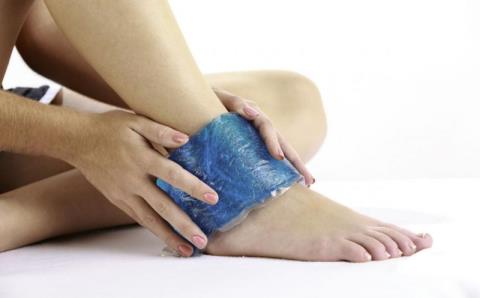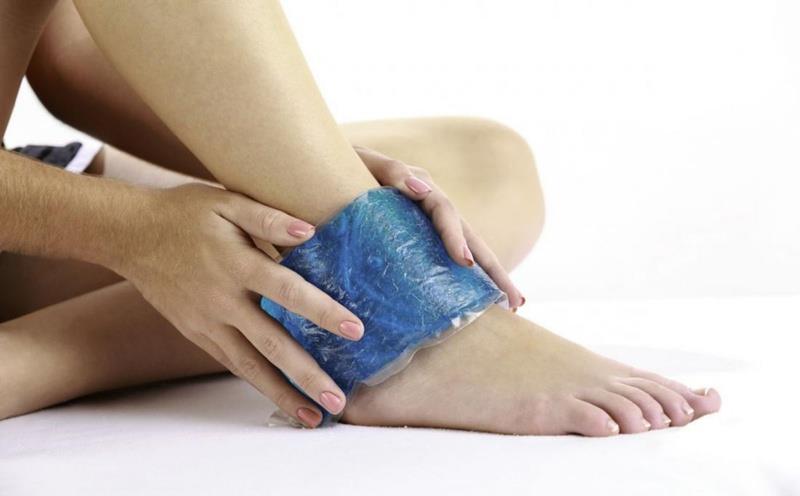What is subcutaneous hemorrhage? Is subcutaneous bleeding in the elderly dangerous?

Subcutaneous hemorrhage is a disease that can occur in all subjects, from children to the elderly. Subcutaneous bleeding in the elderly is mostly due to benign causes, but in some cases this condition can cause serious complications. So what is subcutaneous hemorrhagic disease? Is subcutaneous bleeding in the elderly a cause for concern?
Subcutaneous bleeding occurs when blood cells escape from the vessel wall and enter the tissues beneath the skin under the influence of a certain cause. However, subcutaneous bleeding in the elderly can be a warning sign of some diseases, so it should be more cautious than in other age groups. So how to deal with this situation?
Is subcutaneous bleeding in the elderly worrisome?
What is subcutaneous hemorrhage?
Subcutaneous hemorrhage is the appearance of spots, spots that are red, brown or purple, sometimes quite large patches of hemorrhage under the skin. The cause of bleeding under the skin is because the capillaries burst, blood will escape from the vessel wall and leak into the surrounding tissues. Broken blood vessels can have many different causes, but in most cases the condition causes no serious symptoms. Hemorrhagic lesions may heal within days or weeks.
Subcutaneous hemorrhage can occur at any age, of which the elderly have a more common occurrence, especially in the group of people over 50 years of age.
Bleeding under the skin in the elderly can appear in some of the following forms:
- Hemorrhagic spots appear when only a few small blood vessels have ruptured, looking like tiny spots less than 2mm in diameter or about the size of a crayon tip.
- Purpura occurs when small blood vessels burst. They look like a purple-red patch about 4mm to 1cm in size. Normally, when the hands are pressed against the skin, these purpura will become pale and return to purple-red when the hand is released, whereas the purpura will not discolor when pressed.
- Bruising occurs when many blood vessels that are very close together burst, resulting in blood pooling just below the surface of the skin. Bleeding patches look like bruises but are not always related to trauma.
- A subcutaneous hematoma occurs when large blood vessels rupture, resulting in blood clotting. Usually hematomas are quite small. However, if they appear and grow in organs or in larger body cavities, they can be very serious, even life-threatening.
Subcutaneous bleeding occurs due to broken capillaries
Is subcutaneous bleeding in the elderly serious?
Bleeding under the skin in the elderly can originate from benign causes. However, in some cases, it can be a warning sign of dangerous diseases, such as:
- Diabetes: If the body is regularly bleeding but not due to impact, it can be a warning sign of diabetes . Because when blood sugar is high, organs such as blood vessels, nerves and skin will be weakened, causing capillary bleeding.
- Overtraining: Overtraining can also cause skin bruising. Because excessive exercise can rupture the small capillaries under the skin and cause bleeding under the skin.
- Trauma: Injuries caused by car accidents, tripping, bumps, bites, sunburn... are also factors that cause bleeding under the skin.
- Infections: Certain medical conditions such as pharyngitis, viral infections (cytomegalo virus, hantavirus) or rocky mountain spotted fever (infected by ticks) can also cause subcutaneous hemorrhage.
- Blood diseases : Blood diseases often cause abnormal subcutaneous bleeding symptoms such as acute leukemia, thrombocytopenia, making the blood clotting process worse, mononucleosis... Therefore, Elderly people who see abnormal and unexplained bleeding under the skin should see a doctor soon for an examination.
- Viral hemorrhagic fever: Hemorrhagic fever caused by Ebola virus or Dengue virus can cause hemorrhagic symptoms in many parts of the body. Some other symptoms may be encountered such as continuous fever, muscle aches, body weakness ...
- Drug use: The use of certain drugs that can cause subcutaneous bleeding in the elderly include anticoagulants (warfarin, heparin), antibiotics (nitrofurantoin, penicillin), non-steroidal anti-inflammatory drugs steroids (naproxen, indomethacin)...
- Purpura: This disease causes blood to leak out of small capillaries and leads to hemorrhagic thousands of small bruises, which can be itchy in severe cases.
- Vitamin deficiency: Lack of vitamins, especially vitamin C - an active ingredient that plays an important role in the healing process of wounds and helps the wound to form collagen. A lack of vitamin C in the body increases the risk of small blood vessels bursting and resulting in bleeding under the skin. In addition, vitamin K deficiency can slow blood clotting, vitamin B12 deficiency will affect the body's blood production.
- Hormonal imbalance: This condition usually occurs in postmenopausal women or pregnant women. The main cause is a lack of estrogen hormone levels, which weakens blood vessel walls and makes capillaries vulnerable, increasing the risk of bleeding under the skin.
In addition, when the bleeding is accompanied by other symptoms such as the bleeding area is very painful, swollen, spreads to form large black or bruised patches, bleeding through the skin due to open bruises, fever high, dizzy, short of breath, decreased or lost consciousness... it is necessary to take the patient to the nearest medical facility for treatment to avoid dangerous complications.
 Bleeding under the skin in the elderly can be a warning sign of diabetes
Bleeding under the skin in the elderly can be a warning sign of diabetes
Initial management in the elderly with subcutaneous bleeding
In mild cases, bleeding under the skin in the elderly can be initially managed at home with some of the following methods:
- Ice: Apply ice or a cold pack immediately to the bruise to relieve pain or reduce swelling. Cold compress time lasts about 10-20 minutes / time, from 3 times / day or more depending on the level of each patient and moves the pack on the skin continuously. For the first 48 hours after an injury, avoid things that can increase swelling, such as hot packs, hot baths, or alcohol. After 48-72 hours, if the bruise has disappeared, apply heat and gentle exercise to help heal the wound.
- Elevate the bruised area on the pillow while applying the ice, trying to make sure the area is at or above your heart to help minimize swelling.
- If the bleeding area is swollen and stiff, an elastic bandage can be wrapped around the area to help reduce swelling. Note that it should not be wrapped too tightly because it can affect the bottom of the damaged area, loosen the bandage if it feels too tight. Signs that the bandage is too tight include tingling, numbness, increased pain, swelling, or cold in the area below the bandage.
- In the case of pain in the bleeding area, pain relievers such as paracetamol or ibuprofen can be used but must be followed by a doctor's prescription.
- Drink enough water: Bleeding under the skin in the elderly can signal severe hypovolemic shock. Therefore, rehydration in this case from the outset is essential.
Apply cold on bruises caused by impact to help relieve pain and reduce swelling
In summary, bleeding under the skin in the elderly can be caused by many causes and at the same time it can also be a warning sign of a dangerous disease. If the bruising subsides and there are no additional symptoms, it can be treated initially at home. On the contrary, if they get worse and the body has other symptoms, go to the nearest medical facility for timely examination and treatment.